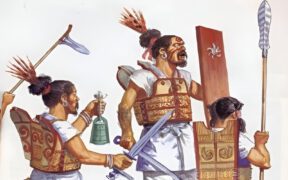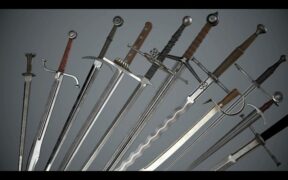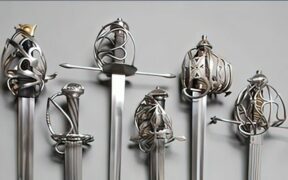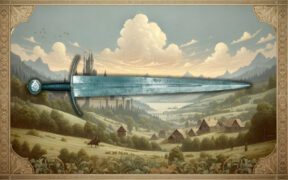Our content features commercial links to our products, committed to transparent, unbiased, and informed editorial recommendations. Learn More
4 Types of Turkish Swords and Their History
NO AI USED This Article has been written and edited by our team with no help of the AI
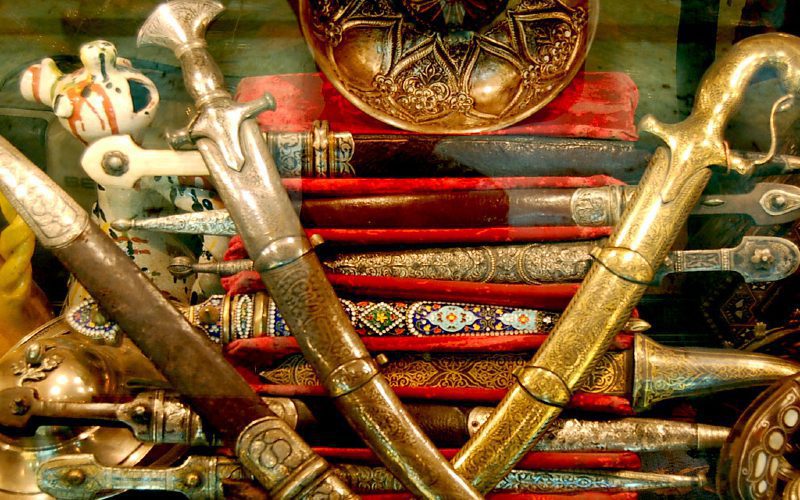
Turkish swords have a very long history and are considered the first curved swords ever used. They spread from Central Asia, and their influence reached Europe, Africa, and even America.
In this article, we will discuss the glorious Turkish swords and their main characteristics. Then we shall explain the many uses these swords had and go over their very interesting history. We will conclude this topic by discussing the question of what the first curved swords were and whether they were Turkish.
1. Kilij
The Kilij is the sword of the Ottoman Empire and the most popular sword in Turkey today. This Ottoman Sword is, without a doubt, the most unique scimitar. It’s seen the most use out of all the Turkish swords, especially from the 15th century until somewhere around the 18th century.
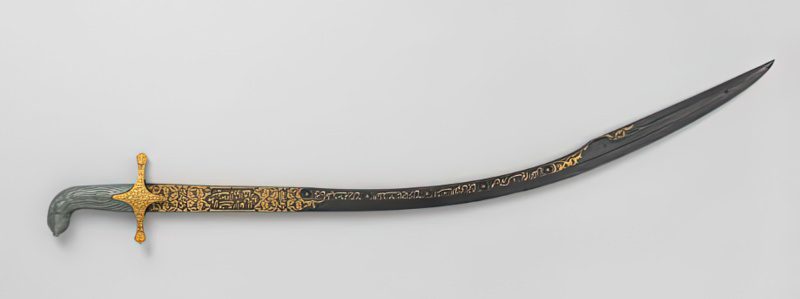
It can be said that this type of sword was used in the very early stages of Turkish history during a period called Gokturks. Although at that time, it had a more delicate curved blade and narrow blade tip called the yelman.
The reason why the Turkish Kilij is so unique is thanks to the widened tip after its distinctive curve ⅔ of the way down the blade. The unique design gave it additional power and made it deadlier than alternative swords used at the time. The Turks quickly made it their main sword, and its design began to influence all of Europe.
It has the typical Middle Eastern L-shaped pommel, usually in the shape of a wolf’s head. The wolf’s head was a common symbol for Turkey, representing a lone warrior without his allies. Early models of this sword were used in the Seljuk army, but it was especially mass-produced in Istanbul under the Ottomans. It could be made from Damascus steel and, most of the time, decorated with drawings or Islamic writings.
The most common and authentic length for the Kilij sword is 27 to 43 inches (68 to 110 cm), making it a weapon to use in close combat but also in mounted warfare.
2. Pala

The Kilij has changed many times over the years, and the Pala has been the most recent innovation. Since the blade in this version was shortened by a good amount, the Pala is the shortest of the Kilij scimitars. Even though the length was cut, the tip was crafted even wider than it was before.
When compared to a regular Kilij, the Pala was even better at cutting because the tip was wider. I was even better at cutting than the popular and well-known Persian Shamshir sword.
3. Gaddare
This type of Turkish Kilij sword is the heaviest compared to the others. This sword was so heavy that it needed to be carried on the shoulder, similar to how rifles are carried today. Its weight also meant that you had to use both hands to wield it. This made it less effective but more deadly in certain scenarios.
4. Yataghan

It was common practice throughout the Ottoman era, which lasted from 16th until the 19th century, to see the Yatagan sword used by soldiers. The Yatagan is a form of a sword that was both well-known and very powerful for its time.
It is challenging to wield because the sword’s optimal blade form, angle, and center of mass of the blade are all different from other swords used at the time. The variation allowed the wielder to respond more easily to an opponent’s attacks.
The devastation and cutting power it has in the hands of a skilled user is far greater than that of other swords used at the time. The themes and inscriptions on a Yatagan are sometimes from poetry and or an epitome, but most of the time, they were poems. They would also often inscribe the name of the possessor of the sword, prayers, the year it was manufactured, and the stamp of the craftsman who forged the sword.
The most common length of the Yatagan sword was around 21 to 29 inches long (55cm to 75cm), making it a very reliable main or backup weapon.
Use of the Turkish Swords
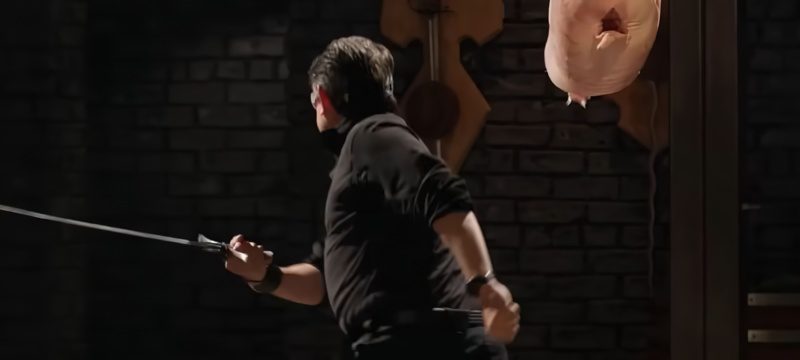
Turkish swords are generally used one-handed, often combined with a shield in the other hand. Sometimes they can be made wider and bigger to be used two-handed for extremely powerful slashing strikes. The yelman, or widening at the blade’s tip, made it possible to be used for thrusting, but these swords are primarily slashing weapons.
Warfare
The combat style of Eastern and particularly Central Asian and Turkic culture was often oriented on speed, agility, and a tactical attack-withdrawal plan. This was in contrast to the Western style, which is based on brute force and static positions.
That is why the curved and widened Turkic sword could inflict heavy damage with a single strike while still being able to be used on the move, making them a great weapon for cavalry units. With time, the yelman became wider and allowed this sword to be used on foot as a thrusting weapon too.
Ceremonial & Cultural
Swords play a vital role in the growth and power of the Turkish people in both history and the present day. The earliest stages of Turkish history are rich with nomads and powerful swords. Even in the Ottoman Empire, the Sultans would always have a sword that they would use for ceremonial purposes or even battle if it came to that.
Today, there are many popular swords like the Ertugrul sword used by sultan Ertugrul and especially Mehmed the Conqueror’s sword, who is known to have read Quran scripts written on his blade before battles.
Today, the sword dance is a highly popular Turkish dance that is widely recognized throughout the world. There are also many wedding dances where the Turkish sword plays a vital symbolic role in protecting the bride and her family.
Modern Turkish Swords
In the current era, Turkish swords are very popular and can be found in a large portion of modern media, especially in modern-day Turkey. It is probably the most popular scimitar sword and can be seen in many reenactments and LARP events.
If you do decide to get a high-quality carbon steel Turkish sword and you are a beginner, we highly recommend that you use the Yataghan first, as the yalman on the Kilij might be more difficult to wield.
History of Turkish Swords
Swords have long been an important part of the everyday lives of Turks in ancient times. As steppe nomads and warrior societies, swords were used daily for defense or offense. Even the first curved swords are believed to have come from the Turkic-Mongol tribes because of their mounted assaults.
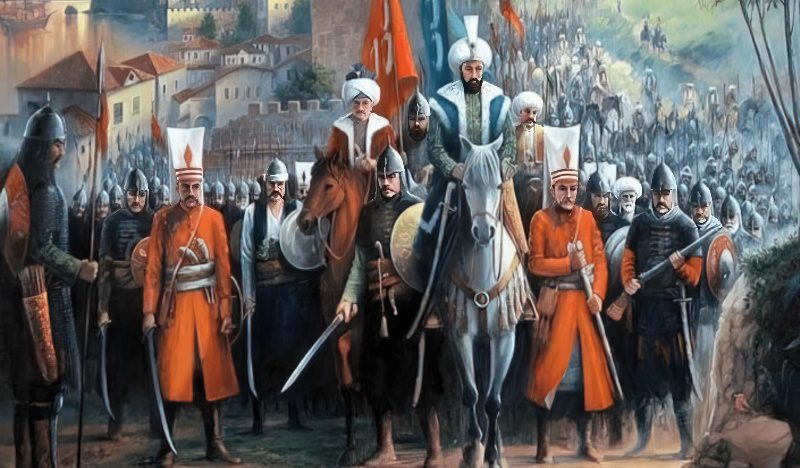
Even in ancient Chinese scripts, it was said that the Turks in the far east and Central Asia were masters at quenching steel and smithing swords. The Turks understood the importance of large curved swords, especially for mounted warfare.
As time went on and the Turkic tribes fell apart because of internal warlord decentralization, the design of Turkish swords also changed. The remnants of tribes that went to the West, known as the Seljuks, developed the famous and most popular Turkish swords we have today.
With the creation of the Ottoman Empire, the Turkish Ottoman sword really saw its peak. There were many towns throughout the large empire that were entirely focused on swordsmithing. This era is when the Turkish Kilij and Yatagan were used the most. They saw combat across three continents and spread their influence everywhere they went.
With the introduction of rifles, Turkish swords started to gradually change in length. This was especially the case after the Mamluk expansion. Around the 19th century, they were finally officially withdrawn from military service, but cavalry units would continue to use them. Even with the withdrawal, the swords had already left their mark on the world.
Influence of the Turkish Sword

Turkish swords had so much influence over the Byzantine Empire that they quickly spread throughout Europe. The curve would also influence Persian and Arab cultures that would go on to make the widely famous curved scimitar.
Thanks to its widespread use across three continents, copies of this sword, like the Karabela, quickly emerged in Hungary, Poland, Russia, and even Germany and France.
Were the first Turkish Swords Curved?
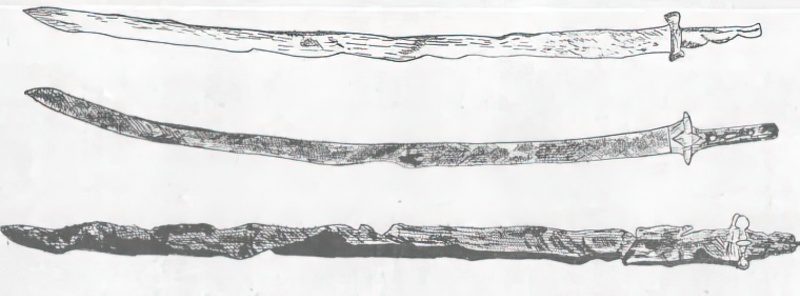
While you might think the first swords from Turkey were curved, the first examples of swords from that region show us otherwise. The first metal swords were made during the Bronze Age and generally followed simple designs that made swords with a solid, straight center.
The introduction of iron, as well as the human nature of conflict and culture, began influencing sword designs. When mounted warfare became more common, it’s possible the design changed from a straight sword to a curved blade.
The earliest forms of curved Turkish swords were found in Altay, a region of Central Asia in both modern Russia and Mongolia. The first findings were single-edged curved swords that had sharpened tips. The first Turkish sword with the authentic Turkic widened tip, known as the yelman, is either the Avar’s present to Charlemagne or the much earlier Attila’s sword.
